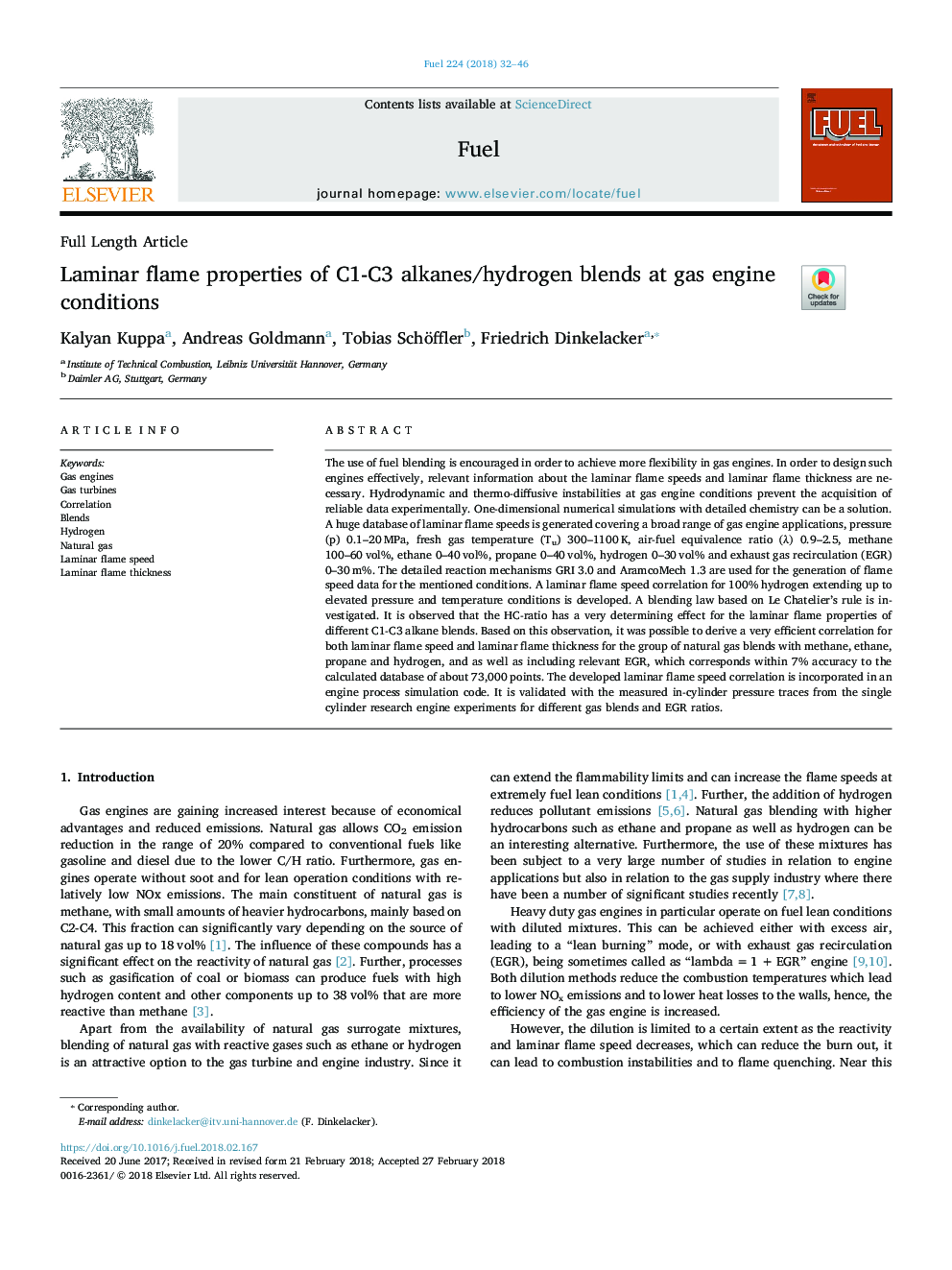| کد مقاله | کد نشریه | سال انتشار | مقاله انگلیسی | نسخه تمام متن |
|---|---|---|---|---|
| 6631095 | 1424940 | 2018 | 15 صفحه PDF | دانلود رایگان |
عنوان انگلیسی مقاله ISI
Laminar flame properties of C1-C3 alkanes/hydrogen blends at gas engine conditions
دانلود مقاله + سفارش ترجمه
دانلود مقاله ISI انگلیسی
رایگان برای ایرانیان
کلمات کلیدی
موضوعات مرتبط
مهندسی و علوم پایه
مهندسی شیمی
مهندسی شیمی (عمومی)
پیش نمایش صفحه اول مقاله

چکیده انگلیسی
The use of fuel blending is encouraged in order to achieve more flexibility in gas engines. In order to design such engines effectively, relevant information about the laminar flame speeds and laminar flame thickness are necessary. Hydrodynamic and thermo-diffusive instabilities at gas engine conditions prevent the acquisition of reliable data experimentally. One-dimensional numerical simulations with detailed chemistry can be a solution. A huge database of laminar flame speeds is generated covering a broad range of gas engine applications, pressure (p) 0.1-20â¯MPa, fresh gas temperature (Tu) 300-1100â¯K, air-fuel equivalence ratio (λ) 0.9-2.5, methane 100-60â¯vol%, ethane 0-40â¯vol%, propane 0-40â¯vol%, hydrogen 0-30â¯vol% and exhaust gas recirculation (EGR) 0-30â¯m%. The detailed reaction mechanisms GRI 3.0 and AramcoMech 1.3 are used for the generation of flame speed data for the mentioned conditions. A laminar flame speed correlation for 100% hydrogen extending up to elevated pressure and temperature conditions is developed. A blending law based on Le Chatelier's rule is investigated. It is observed that the HC-ratio has a very determining effect for the laminar flame properties of different C1-C3 alkane blends. Based on this observation, it was possible to derive a very efficient correlation for both laminar flame speed and laminar flame thickness for the group of natural gas blends with methane, ethane, propane and hydrogen, and as well as including relevant EGR, which corresponds within 7% accuracy to the calculated database of about 73,000 points. The developed laminar flame speed correlation is incorporated in an engine process simulation code. It is validated with the measured in-cylinder pressure traces from the single cylinder research engine experiments for different gas blends and EGR ratios.
ناشر
Database: Elsevier - ScienceDirect (ساینس دایرکت)
Journal: Fuel - Volume 224, 15 July 2018, Pages 32-46
Journal: Fuel - Volume 224, 15 July 2018, Pages 32-46
نویسندگان
Kalyan Kuppa, Andreas Goldmann, Tobias Schöffler, Friedrich Dinkelacker,